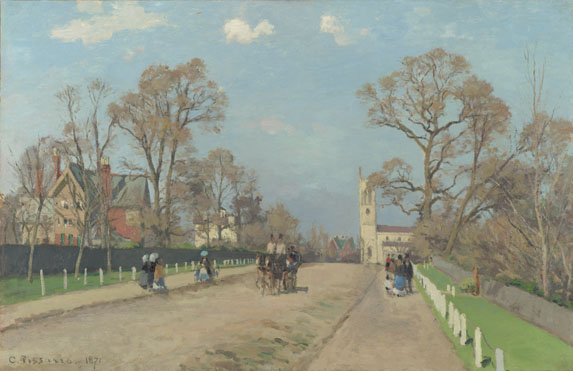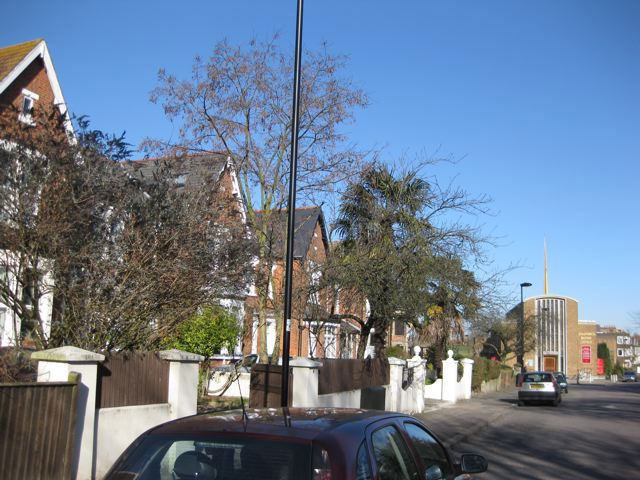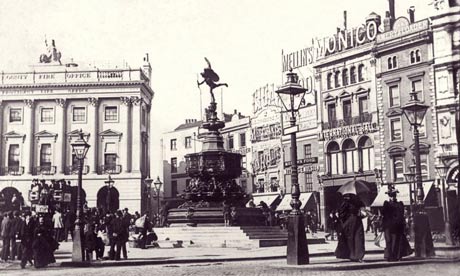
Why did Pissarro come to south London?




 A replica of a corner from the original iron and glass structure
A replica of a corner from the original iron and glass structure






1870 saw the outbreak of the Franco-Prussian war and many artists took refuge inEngland, to escape being called up to the National Guard. dulwich college
dulwich college
 dulwich college
dulwich college
Pissarro was living at the time in Louveciennes  in the Paris suburbs, with his common-lawwife Julie who was pregnant with their third child. They fled first of all to Brittany, where Julie gave birth to their daughter Adèle. The baby unfortunately died of an infection at onlytwo weeks old in early November 1870, whereupon Pissarro decided to move his family toLondon to escape the war completely. His mother, Rachel, was living in Rosendale Roadin Norwood,
in the Paris suburbs, with his common-lawwife Julie who was pregnant with their third child. They fled first of all to Brittany, where Julie gave birth to their daughter Adèle. The baby unfortunately died of an infection at onlytwo weeks old in early November 1870, whereupon Pissarro decided to move his family toLondon to escape the war completely. His mother, Rachel, was living in Rosendale Roadin Norwood, and his brother Alfred, with his own family, also lived in Norwood, so southLondon was an obvious destination. A number of other artists, including Monet, also lived in London at this time.
and his brother Alfred, with his own family, also lived in Norwood, so southLondon was an obvious destination. A number of other artists, including Monet, also lived in London at this time.
 in the Paris suburbs, with his common-lawwife Julie who was pregnant with their third child. They fled first of all to Brittany, where Julie gave birth to their daughter Adèle. The baby unfortunately died of an infection at onlytwo weeks old in early November 1870, whereupon Pissarro decided to move his family toLondon to escape the war completely. His mother, Rachel, was living in Rosendale Roadin Norwood,
in the Paris suburbs, with his common-lawwife Julie who was pregnant with their third child. They fled first of all to Brittany, where Julie gave birth to their daughter Adèle. The baby unfortunately died of an infection at onlytwo weeks old in early November 1870, whereupon Pissarro decided to move his family toLondon to escape the war completely. His mother, Rachel, was living in Rosendale Roadin Norwood, and his brother Alfred, with his own family, also lived in Norwood, so southLondon was an obvious destination. A number of other artists, including Monet, also lived in London at this time.
and his brother Alfred, with his own family, also lived in Norwood, so southLondon was an obvious destination. A number of other artists, including Monet, also lived in London at this time.
The writer Emile Zola lived in south London in 1899, and took photographs of places  that Pissarro knew and painted. Although not exact contemporaries, these photos by another well-known French figure provide an interesting visual comparison as to how the arealooked at the end of the 19th century.
that Pissarro knew and painted. Although not exact contemporaries, these photos by another well-known French figure provide an interesting visual comparison as to how the arealooked at the end of the 19th century.
 that Pissarro knew and painted. Although not exact contemporaries, these photos by another well-known French figure provide an interesting visual comparison as to how the arealooked at the end of the 19th century.
that Pissarro knew and painted. Although not exact contemporaries, these photos by another well-known French figure provide an interesting visual comparison as to how the arealooked at the end of the 19th century.
Pissarro only remained in London until the summer of 1871, producing a dozen paintings of  his new surroundings, focusing on his neighbourhood rather than central London.
his new surroundings, focusing on his neighbourhood rather than central London. He came back to London on three subsequent visits, and painted subjects in west and centralLondon.
He came back to London on three subsequent visits, and painted subjects in west and centralLondon.old1.jpg)
 He came back to London on three subsequent visits, and painted subjects in west and centralLondon.
He came back to London on three subsequent visits, and painted subjects in west and centralLondon.old1.jpg)
Pissarro went home to Louveciennes to find that approximately 1,500 paintings had beenransacked from his house, including some by Monet. Some of Pissarroʼs own canvases had been used as ʻbutchersʼ apronsʼ as the house had been occupied by the enemy, withlivestock being kept both in and out, and the place being used as a slaugherhouse.
In 1870-71, Pissarroʼs new stamping ground of Norwood and Crystal Palace became his new inspiration for a number of paintings which form the basis of this trail. However, ratherthan look at these just as paintings, the aim of the trail is to discover more about thesubject matter of his paintings.
A local landmark, and in existence as a school since 1619, Dulwich College was rebuilt in1870. The new design was the work of Charles Barry Junior, his father being the eminentarchitect Charles Barry, responsible for the new Houses of Parliament. The new Collegewas opened by the Prince of Wales on 21st June 1870, precisely 251 years to the day after James 1 had signed the letters patent for its foundation. The colour of the foliagesuggests that Pissarro must have painted this view of the college in the autumn of 1870but, since his baby daughter died on 5 November when the family were living in Brittany, itis must have been late November or even early December.

Dulwich College, 2011 (photograph by Anne Collins)
The College has an illustrious history. It was founded by Edward Alleyn, one of the greatactors of the 17th century, who had purchased the manorial estate of Dulwich, which runs from Denmark Hill to Sydenham Hill,
to Sydenham Hill, and which still exists as the Dulwich estate today.The statutes stipulated that the boys should be given a “cup of beere” at breakfast, and“beere without stint” at dinner, the meat should be “sweet and good” and their bread “wellbaked”.
and which still exists as the Dulwich estate today.The statutes stipulated that the boys should be given a “cup of beere” at breakfast, and“beere without stint” at dinner, the meat should be “sweet and good” and their bread “wellbaked”.
 to Sydenham Hill,
to Sydenham Hill, and which still exists as the Dulwich estate today.The statutes stipulated that the boys should be given a “cup of beere” at breakfast, and“beere without stint” at dinner, the meat should be “sweet and good” and their bread “wellbaked”.
and which still exists as the Dulwich estate today.The statutes stipulated that the boys should be given a “cup of beere” at breakfast, and“beere without stint” at dinner, the meat should be “sweet and good” and their bread “wellbaked”.
Charles Barryʼs design was inspired by memories of his Grand Tour of Europe, accordingto the archivist at Dulwich College, Dr J. R. Piggott. Details from a number of Italian  monuments are visible, ranging from the triangular gables at Orvieto and Siena cathedrals,to the turrets of the Charterhouse of Pavia. Whilst the Collegeʼs archivist views these as resulting in a ʻhybrid and eclecticʼ building, Barry himself preferred to think of it as ʻNorth Italian of the Thirteenth Centuryʼ. Barryʼs career included creating the forecourt andPiccadilly facade of the Royal Academy of Arts (Burlington House), as well as becomingPresident of the Royal Institute of British Architects and winning a gold medal in 1877 for his achievements, the Academy and New College of Dulwich being specifically cited.
monuments are visible, ranging from the triangular gables at Orvieto and Siena cathedrals,to the turrets of the Charterhouse of Pavia. Whilst the Collegeʼs archivist views these as resulting in a ʻhybrid and eclecticʼ building, Barry himself preferred to think of it as ʻNorth Italian of the Thirteenth Centuryʼ. Barryʼs career included creating the forecourt andPiccadilly facade of the Royal Academy of Arts (Burlington House), as well as becomingPresident of the Royal Institute of British Architects and winning a gold medal in 1877 for his achievements, the Academy and New College of Dulwich being specifically cited.
 monuments are visible, ranging from the triangular gables at Orvieto and Siena cathedrals,to the turrets of the Charterhouse of Pavia. Whilst the Collegeʼs archivist views these as resulting in a ʻhybrid and eclecticʼ building, Barry himself preferred to think of it as ʻNorth Italian of the Thirteenth Centuryʼ. Barryʼs career included creating the forecourt andPiccadilly facade of the Royal Academy of Arts (Burlington House), as well as becomingPresident of the Royal Institute of British Architects and winning a gold medal in 1877 for his achievements, the Academy and New College of Dulwich being specifically cited.
monuments are visible, ranging from the triangular gables at Orvieto and Siena cathedrals,to the turrets of the Charterhouse of Pavia. Whilst the Collegeʼs archivist views these as resulting in a ʻhybrid and eclecticʼ building, Barry himself preferred to think of it as ʻNorth Italian of the Thirteenth Centuryʼ. Barryʼs career included creating the forecourt andPiccadilly facade of the Royal Academy of Arts (Burlington House), as well as becomingPresident of the Royal Institute of British Architects and winning a gold medal in 1877 for his achievements, the Academy and New College of Dulwich being specifically cited.
The College was the recipient of a very important donation of paintings in 1811 by Sir Francis Bourgeois. The bequest resulted in the creation of Dulwich Picture Gallery,designed by Bourgeoisʼs friend, the eminent architect Sir John Soane, and became thefirst public art gallery in England. Pissarro visited the Gallery while he was living in southLondon, as did Monet and Van Gogh during their respective stays in the city, and their signatures are to be found in the Visitorsʼ Book.
Two of the most famous figures associated with Dulwich College are Sir ErnestShackleton, who was at the school in the late 1880s and P.G. Wodehouse who attendedfrom 1894, both after Pissarroʼs time in the area. Shackletonʼs famous boat, the James Caird, which carried the explorer and his crew on the epic journey to Antartica, is preserved at the College to this day. Memories of the College persist in the pages of Wodehouseʼs novels, both as a location, Valley Fields, and in the form of fellowschoolboys who appear as various characters.
Location 2: Crystal Palace

The Crystal Palace, Camille Pissarro 1871 (Art Institute of Chicago)

The former site of Crystal Palace, a busy main road today
The Exhibition of the Industry of all Nations, known as the Great Exhibition of 1851, was originally built at Hyde Park and was a great success - the numbers of visitors had  bath road
bath road
surpassed six million in six months of opening. The palace structure was later dismantled and Sir Joseph Paxton designed it to be rebuilt on a site in south London, reopening in 1854. The area around the Palace became very fashionable, well known as a centre for pleasure,with attractions such as music, ballooning, fishing and boating, a ʻstalactite cavernʼ and its magnificent fountains.
 bath road
bath roadsurpassed six million in six months of opening. The palace structure was later dismantled and Sir Joseph Paxton designed it to be rebuilt on a site in south London, reopening in 1854. The area around the Palace became very fashionable, well known as a centre for pleasure,with attractions such as music, ballooning, fishing and boating, a ʻstalactite cavernʼ and its magnificent fountains.

The original terraces, site of Crystal Palace

A charming guide produced by Mr J. Platt in 1888 called ʻPlattʼs Crystal Palace DistrictPast and Present Handbook and Guide to Walks and Rides within a 6 mile radius” and printed by him at his Steam Printing Works on Westow Street says that the main attractionis the grounds which “in the height of season, should be seen to be admired by every Englishman, for they are indeed something to be proud of” which give pleasure and respite of “jaded holiday seekers, fresh - or, rather, stale - from their smoke-begrimed homes inneighbourhoods where, now-a-days, little is to be seen except gas lamps and endless piles of bricks and mortarʼ.
Novelist and part-time photographer Emile Zola visited Crystal Palace and the scenewould not have substantially changed since the time at which Pissarro was living nearby.

Norwood, S. London 1898-99 by Emile Zola (Norwood Society with London Borough of Croydon and the Association du Museé EmileZola)
Location 3: All Saintsʼ Church, Beulah Hill
Pissarroʼs original painting and sketches refer to this as the Church of Westow Hill. Whilst geographically very close to Westow Hill, it has since been identified as All Saintʼs Church on Beulah Hill, although the architecture of the church is represented differently inPissarroʼs work.


Study of Upper Norwood, London, with All Saints Church by Pissarro (Ashmolean Museum)
All Saints Church, Norwood by Pissarro © The Athenaeum

View of All Saints Church from another angle
There are four existing sketches (including the sketch above) which were probably doneon the spot, but it is likely that the painting was done in a studio, and possibly even after his return to France using the sketches. The winter of 1870-71 was a very severe one,with temperatures being recorded at 34ºF (6.5ºF below average) in January, andDecember being around the 33ºF mark, so not conducive to lingering outdoors.
Quite a lot of Pissarroʼs English paintings have titles which donʼt match up to their actuallocations, partly because one of his sons, Ludovic, produced the catalogue of his works about 70 years after the paintings were done, and many of the paintings had acquiredgeneral titles in the intervening years.
All Saintʼs Church acquired a certain notoriety in 1867 because of a ʻcash for gravesʼ scandal leading to a Home Office investigation. The scandal came to light because localresidents complained about the terrible smell emanating from the church graveyard, and itlater transpired that, despite the reverendʼs protestations that only 1,900 souls were buriedthere, there were in fact more than 3,000 bodies interred in the cemetery, an average of 3bodies per grave!
Location 4: St Stephenʼs Church, Dulwich
Emile Zola, the French author, also lived in south London, in the late 1890s, andchronicled his time here by the use of the then new technology, via the medium ofphotography. Many of his photos correspond to places which Pissarro would have knownand this photo of St Stephenʼs Church from the same viewpoint was taken by Zola.


No comments:
Post a Comment